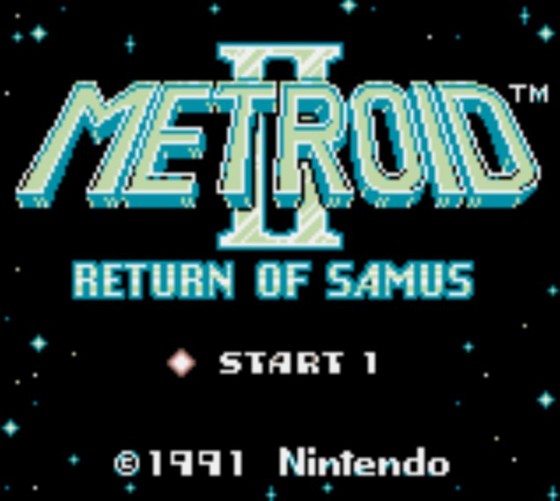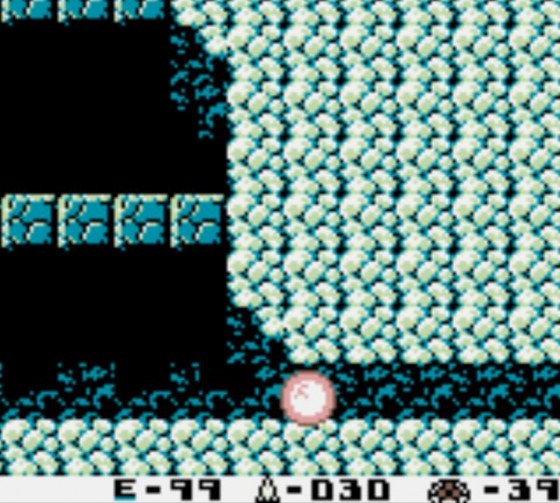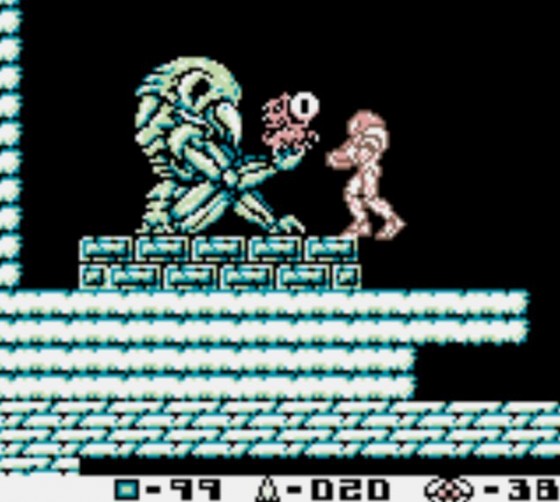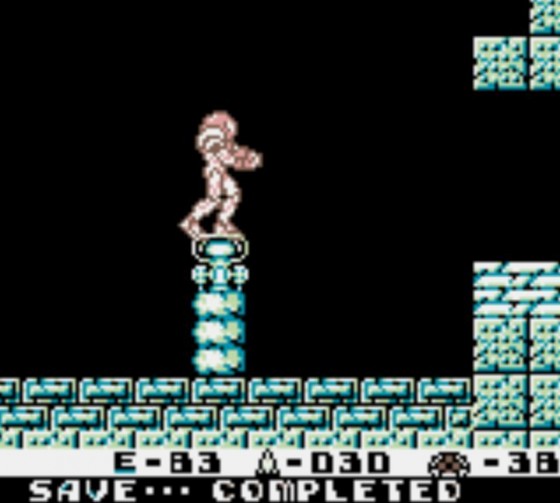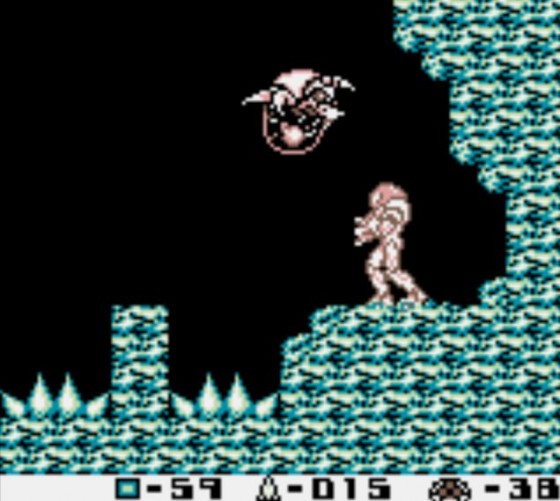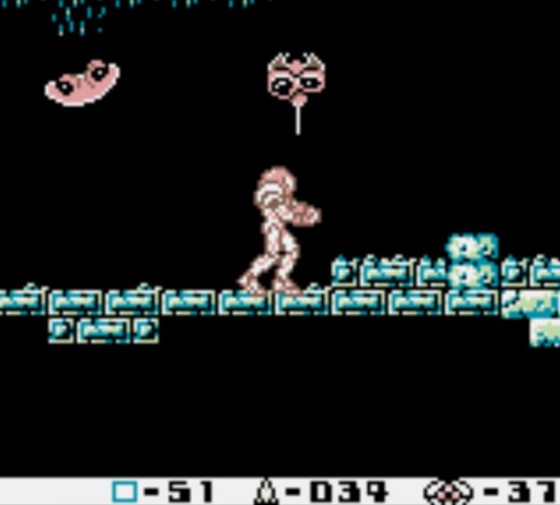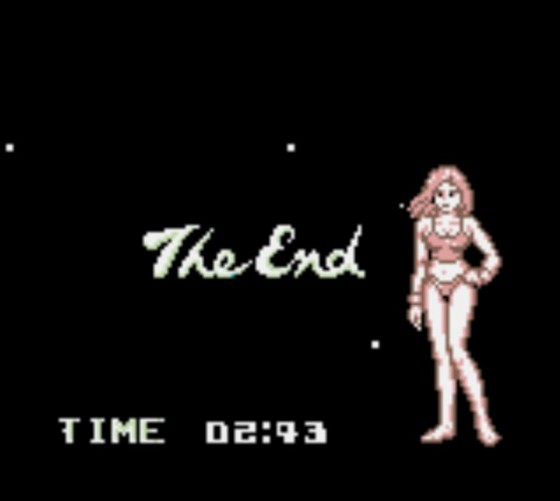Super Metroid is probably one of the top five most popular SNES games, and one of my personal favorites on the console. For many people it was their introduction to the franchise. “The last Metroid is in captivity. The galaxy is at peace…” is now an iconic phrase. However, not many people ask the why the last Metroid is in captivity. Instead they ask “y cant metroid crawl?”.
Metroid II:Return of Samus was released in November of 1991 for the Game Boy and was another great title from the mind of Gunpei Yokoi, the father of the Game Boy and many great Nintendo franchises. Interestingly enough, Metroid II uses the same engine as Kid Icarus: Of Myths and Monsters, much like how the original Metroid shared the same engine as Kid Icarus.
As Super Metroid’s introduction would lead you to believe, Metroid II fills in the gap between the first and third game, chronologically. At least, it did until the Prime games were introduced and all of that Phazon stuff happened. I played Metroid Prime, I enjoyed it, but I’m not completely familiar with the events that happened since I didn’t finish it or play Echoes and Corruption. I can already feel my in-box and Twitter feed flooding with messages telling me to play them.
This time, Samus is sent to the planet SR388, the Metroid homeworld. The Galactic Federation has given her orders to completely eradicate the species out of existence. Good old fashioned genocide, fun stuff. That’s about all we need for a storyline, right? Well, the developers of the more recent games didn’t think so. Since 1991 a lot of supplemental material has been produced and the developers of the more recent games have tried to flesh out backstory more and fit it in with the mythos of the newer games. Originally, SR388 was said to have had an unknown ancient civilization, since then it’s been said that it is Chozo ruins. This makes sense, since there’s Chozo statues where you collect power-ups. Supposedly the Metroids were part of an experiment the Chozo were carrying out and were left abandoned and then went feral. Maybe someday Nintendo can clear things up with a remake.
As you would expect, Metroid II is laden with energy tanks, missile pods, and upgrades. All of the classics are here, such as the Ice Beam, the Screw Attack, and the Varia suit. For many of these, this was their first introduction, like the Spazer Beam and the Plasma Beam. Unlike the other Metroid games, you’re not blocked off from other areas due to your equipment. Sure, sometimes you need to get a power-up to reach a ledge to progress, but lava is the main thing that blocks your way from moving deeper into the caverns. The bottom of your screen has a counter that shows how many Metroids are left on the planet. When you pause the game, it shows how many you need to destroy to trigger the next earthquake. Once the earthquake happens, the lava level will drop and allow you to explore more of SR388. And explore you shall. There’s a seemingly endless number of hidden passageways that lead to missile pods and optional items, such as the spring ball.
There aren’t any real boss fights, save for the final boss. There’s no Ridley or Kraid, or even any bad guys that get in your way aside from the Metroids. You can consider the Metroids your boss fights, as they’re not like the little flying guys you’ve seen in Metroid or Super Metroid. They have different forms now. At first you fight some Alpha Metroids, who take five missiles to defeat. Eventually you’ll fight Gamma, Zeta, and the enormous Omega Metroids who you’ll be pummeling with dozens of missiles. The ice beam won’t freeze any of these evolutions, so expect some of the fights to get a little dicey.
Due to the limited display of colors, or shades rather, there were a number of adaptations the developers made in order for Metroid to work on the Game Boy. Many of these changes became staples of the Metroid franchise, such as the varia suit looking bigger and bulkier than the regular suit, and having a different look to Samus’s arm cannon when firing missiles. Since there’s a lot of detail in Samus, and she’s a lot bigger in relation to the rest of the screen than other Metroid games. The level design works with this, giving you dark chasms more so than large open expanses.
The music adds to the atmosphere of the game, which is very solitary. Most of it will be mistaken for silence. You get some nice themes in the main corridors and while you’re in the ruins. The music that plays while you fight the Metroids is pretty cool. The rest are ambient background noises. While I’d prefer tracks like the NES or SNES incarnations, it does add to the overall tension of the game, giving you that isolated feeling until the music strikes up when a Metroid is about to come rip your face off.
Much like Kid Icarus: Of Myths and Monsters, I feel like Metroid II was often overlooked because it was a portable game. However, it’s an incredibly solid title with plenty of replay value. Like other Metroid games, you can always shoot for a quicker time, and I don’t think I’ve ever gotten all of the missile pods. When Metroid II came out, it really showed off that the Game Boy could have games with controls and gameplay just as good as the NES. Sure, it may not have the same variety of areas as the other games or the incredible music. It makes up for that with it’s moodiness and tension. It’s also an important step in the Metroid universe that continues to echo throughout the series. These days it may be hard to track down a cartridge for the Game Boy, thankfully it’s available on the Nintendo 3DS e-shop.
Enjoyed it? Avoided it? I want to know! Comment below or drop me a line on Facebook or Twitter.

